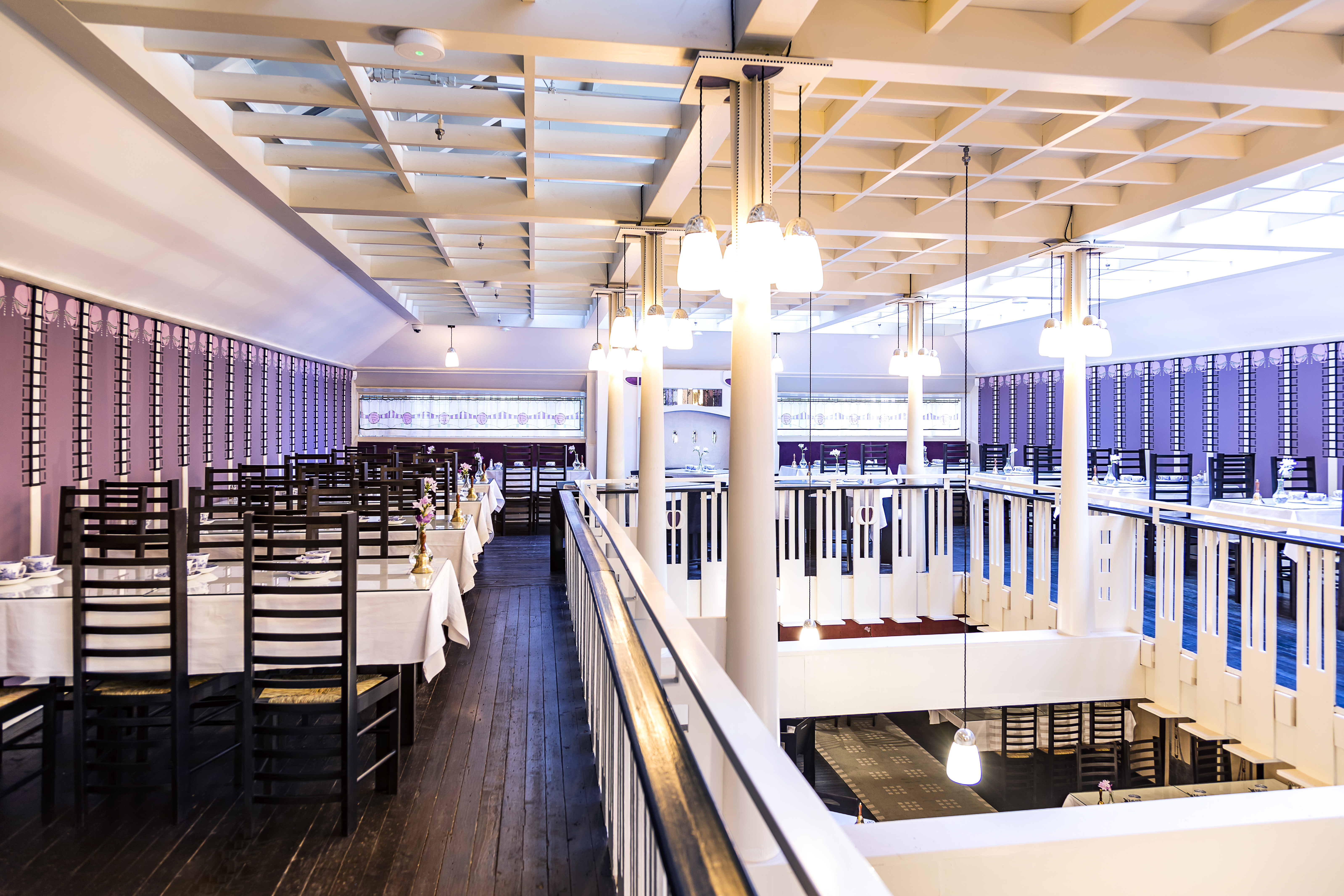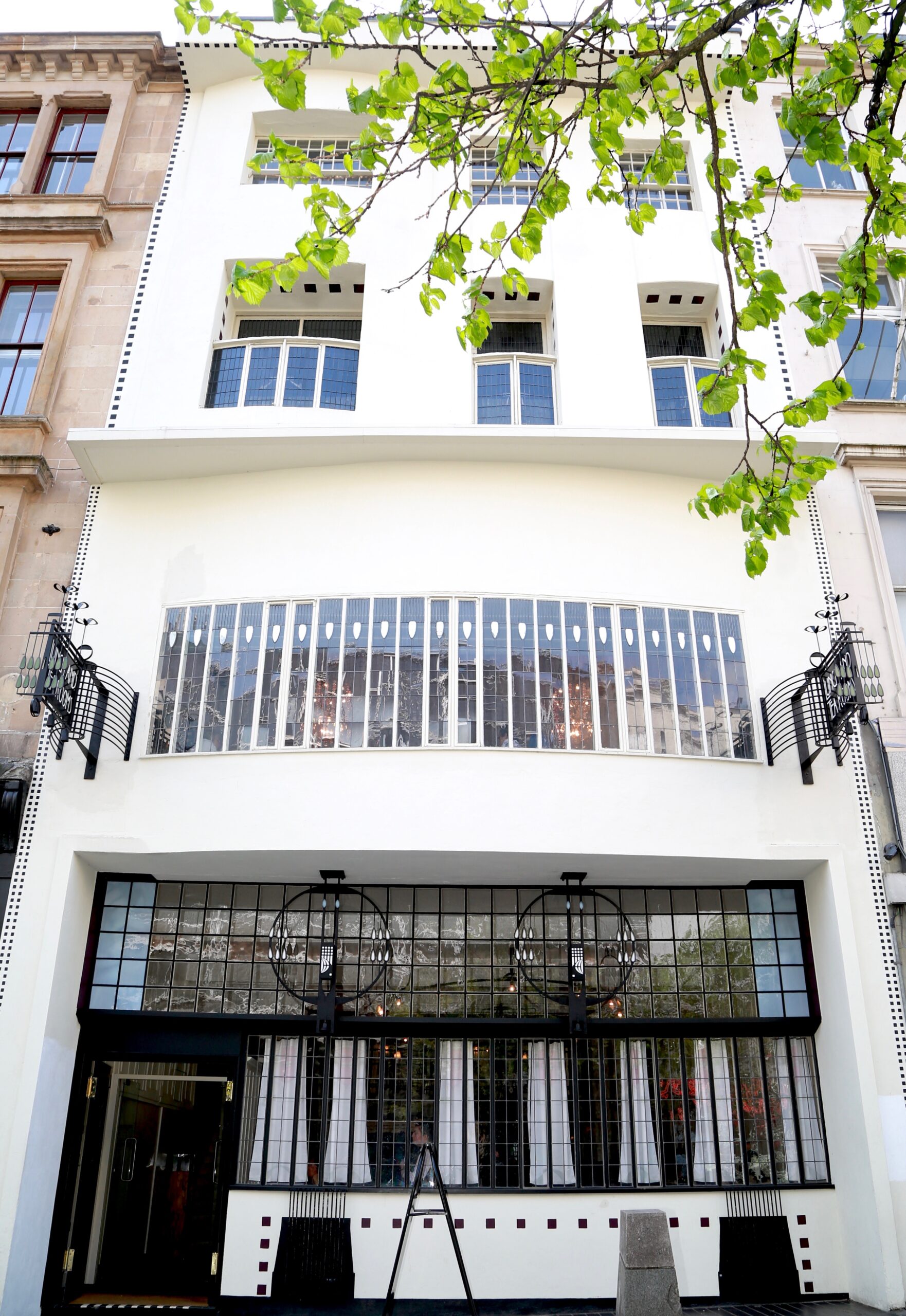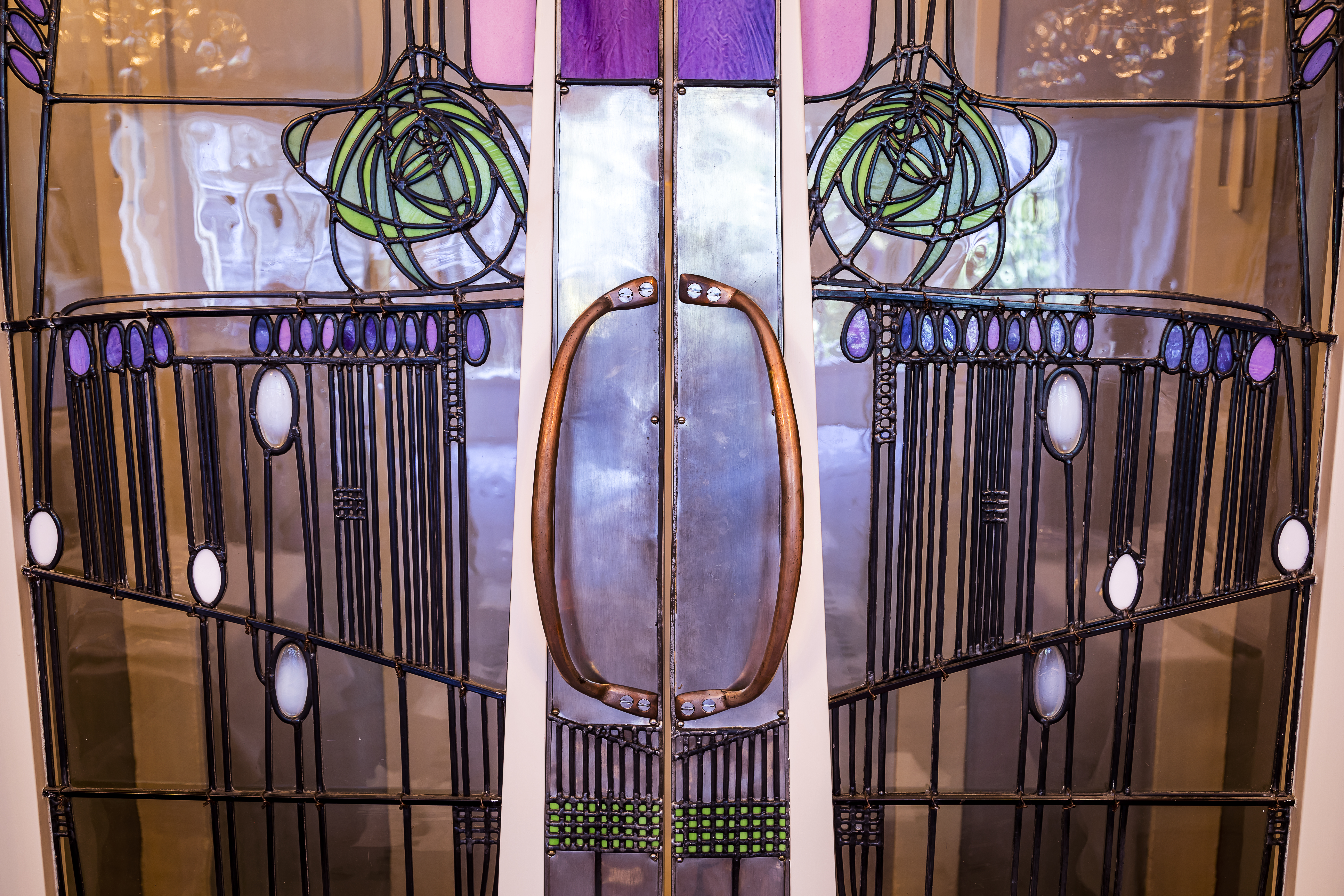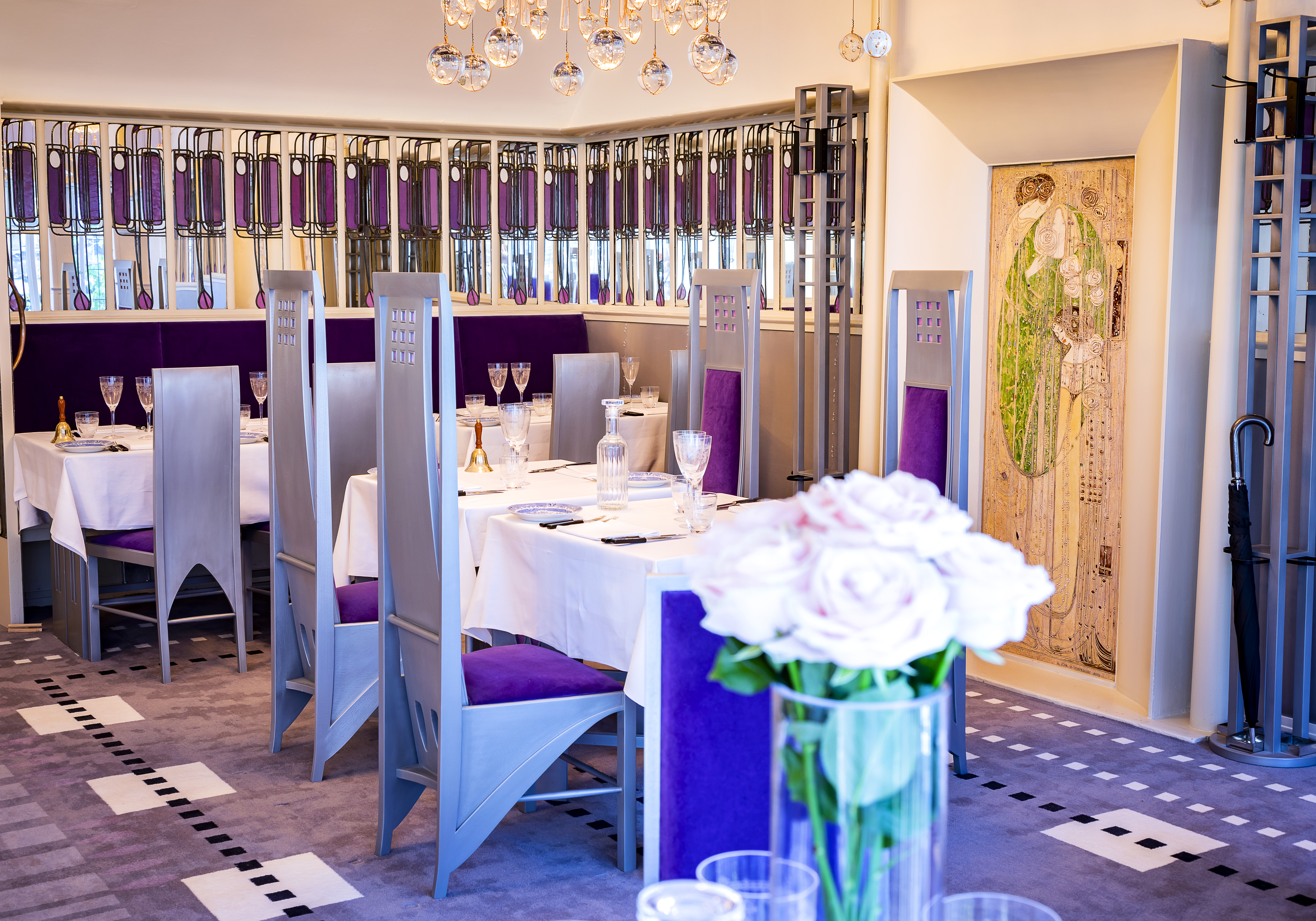National Trust for Scotland Acquires Mackintosh at the Willow
Mackintosh at the Willow, on Glasgow’s Sauchiehall Street, is to become part of the National Trust for Scotland’s portfolio of heritage properties.
The Trust’s acquisition was made at The Willow Tea Rooms Trust’s request following difficult operating conditions that threatened the future of the property. Enabled by support from its members and donors, including Americans via The National Trust for Scotland Foundation USA, the National Trust for Scotland is using $2.2 million of its reserves and acquisition funds to secure this important and original work by Charles Rennie Mackintosh. Vital additional support was provided by the National Lottery Heritage Fund (NLHF), the Royal Bank of Scotland, the Architectural Heritage Fund (AHF), Glasgow City Council, and Celia Sinclair Thornqvist MBE and her husband, Rolf Thornqvist. As a result, the property will continue operating as normal with many jobs preserved.
Mackintosh at the Willow, which dates to 1903 and was purchased, saved, and restored by Celia Sinclair Thornqvist MBE and The Willow Tea Rooms Trust between 2014 and 2018, is the last remaining original of the several tea rooms designed by Charles Rennie Mackintosh, working with his wife Margaret Macdonald, for pioneering Glasgow entrepreneur Miss Catherine ‘Kate’ Cranston.
The restoration resulted in one of the most spectacular heritage attractions in Glasgow, restoring and recreating jewel-like interior designs and a façade that pay testament to the unique vision of Mackintosh and Macdonald.

Inside the restored Mackintosh at the Willow
Early 20th-century patrons of the tea rooms had never seen anything like these designs before, and they quickly became a popular setting in which to socialize, particularly for women seeking a safe space for refreshments and conversation. The tea rooms are cited worldwide in architectural histories as one of Glasgow’s most important contributions towards modernism and were, alongside Mackintosh and Macdonald’s other works, highly influential in Europe and elsewhere from the moment of their opening.
Although the tea rooms attracted over 230,000 visitors last year, the cumulative impacts of the disruption caused to Sauchiehall Street by the second fire at the Glasgow School of Art and the COVID pandemic had adversely affected the property’s income, despite the underlying business model being sound. Given the importance of the site to Scotland’s national heritage, the National Trust for Scotland was approached last year to consider options that would ensure the tea room’s long-term security and sustainability.
Philip Long OBE, the National Trust for Scotland’s Chief Executive, said:

The beautiful frontage on Sauchiehall Street
“Mackintosh is one of the greatest architects of the 20th century, respected internationally for his breathtaking and innovative design. People from around the world travel to Scotland to see his and his wife Margaret Macdonald’s brilliant work together. As the custodians of one of Mackintosh’s other rare masterpieces, the Hill House (on which Macdonald also collaborated), we see the acquisition of Mackintosh at the Willow as a perfect fit.
“The brilliant restoration by The Willow Tea Rooms Trust, with the support of the National Lottery Heritage Fund and many others, gifted back to the nation an exceptional example of architectural heritage that we are proud to bring into our care.
“Despite difficulties that were outwith the control of The Willow Tea Rooms Trustees and the management team, the work they have done with their staff in welcoming visitors, running community learning and outreach and in providing an exceptional heritage experience is exemplary – and we are certain we can build on their achievements to ensure the long-term sustainability and survival of this wonderful place on behalf of Glasgow and Scotland.
“I want to pay tribute to the foresight of our own Board Members for their support of our partnership with The Willow Tea Rooms Trustees, which has averted the risk of potential closure and safeguarded this vitally important place for the future, and also to our members and supporters whose generosity over the years has given us the financial means to acquire, secure and protect Mackintosh at the Willow alongside all of the other historic and natural treasures we care for on behalf of the people of Scotland.
“The prospects for Mackintosh at the Willow, and for the City of Glasgow, are genuinely exciting: through the work of Glasgow City Council and the Lottery funded Heritage Places scheme, redevelopment is underway, with ambitions to return Sauchiehall Street to a cultural corridor better linking together such surrounding world-class institutions and venues as The Royal Conservatoire of Scotland, the Glasgow Royal Concert Hall, and the Theatre Royal. We are looking forward to the National Trust for Scotland playing a part in this transformation through our new responsibility for Mackintosh at the Willow.
“I’m sure the members of the National Trust for Scotland, especially those living in Glasgow and the West of Scotland, will welcome this addition to our portfolio and the opportunity it gives them to enjoy the excellent tours and exhibition on offer, not to mention the mouth-watering offers within the tea rooms.
“We’re welcoming the existing workforce into the National Trust for Scotland family: the insight and expertise they have will be a great benefit to us and will be instrumental in ensuring that Mackintosh at the Willow continues to welcome visitors.
“I particularly want to thank the National Lottery Heritage Fund, the Trustees of The Willow Tea Rooms Trust, the Royal Bank of Scotland, the Architectural Heritage Fund, and Glasgow City Council. as well as many other individuals and supporters, for their very welcome encouragement and help in bringing about today’s announcement.”
Mackintosh at the Willow will formally become one of the National Trust for Scotland’s properties with effect from 19 January 2024. However, members of the Trust will be able to enjoy access to the property’s excellent exhibition for free from 12 January.

Incredible doors inside Mackintosh at the Willow
The property is within walking distance to the National Trust for Scotland’s Tenement House in Glasgow’s Garnethill, which offers a contrasting but complementary experience of Glaswegian life at the turn of the 19th and 20th centuries. The tea rooms also join other Trust properties in the region – Alexander ‘Greek’ Thomson’s Holmwood in Cathcart and Greenbank Garden in Clarkston.
Charles Rennie Mackintosh’s Hill House, which is currently undergoing a multi-million-dollar restoration under a protective ‘box’, is also owned by the National Trust for Scotland and is just over an hour away from Glasgow by train.


